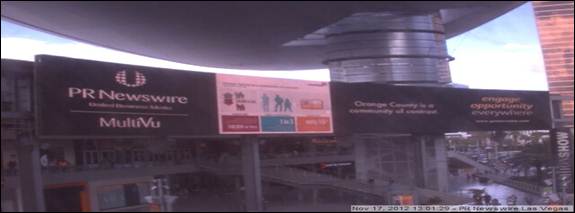ConnectOC: Connecting Orange County's haves and have-nots with public data
First, Cynthia Ragland and the team at the Orange County Foundation had to connect 210 tablets to the hotel wi-fi. And then they had to hide them under the centerpieces on the tables.*
That's because they were launching ConnectOC, Orange County's first "civic indicators" project, previewing it to the community's movers and shakers -- policymakers, entrepreneurs, leaders of local nonprofits, and the foundation's major donors.
"Orange County is a community of contrasts," says Ragland. "A lot of people when they think of Orange County think of opulent homes and six figure incomes. It surprises people to realize that there are people who are really vulnerable, people who are hungry or don't have a warm place to sleep."
The point of ConnectOC, says Ragland, is to take those issues and make them visible to people and motivate them to make a difference, "to move the needle on these issues," says Ragland. "In LA or NYC, you see the needs as you walk down the street. Here, it's hidden. And we're trying to show them what's hidden."
While civic indicators projects are not new, they're also not evenly distributed in communities across the United States, and this was Orange County's first attempt to take the massive amounts of publicly available data on civic issues and tell a story with it. OC Connect was influenced by a similar project that was the work of the Seattle Foundation. "They're a much larger foundation and serving a much larger geographic area," says Ragland, "and they track a big number of indicators. We started with fewer indicators." They ended up focusing on three broad areas:
- "Safety Net," information about basic needs such as food and housing;
- "Healthcare," including information about the uninsured and access to healthcare;
- "Education," which addresses educational opportunities for at-risk residents, particularly access to early-childhood education.
"We wanted to provide residents with information about these three issues that we identified as important," says Ragland, "and we wanted it to be accessible, easy to understand, and relevant."
Getting People to See The Data
There's no use in compiling data and presenting elaborate views of it if no one's going to see it. Connecting and working with local media was a big part of the foundation's strategy, says Ragland. "What was really remarkable was that this really resonated with them. The OC Register did a front page story. The AP's lead on their story was "Orange County may be known for Disneyland, but not all of the residents are living in the Magic Kingdom." Infographics from the report were displayed on the news board in Times Square in New York City as well as in Las Vegas.

What gets people's attention are the numbers -- and how those numbers contrast with many Orange County residents' view of their community. Only 55% of children are reading at grade level; half of all families of four earn less than $40,000 a year, one third do not have access to basic medical care.
"This is not Hollywood's Botox-infused view of Orange County. Far from it," writes Steve Churm, publisher of OCMetro. "This is a county with a mounting punch list of issues that, if unchecked, will erode the very foundation that has made this county the envy and the aspiration of many."
Data-driven foundation
"What's amazing to me is the way that this project has changed the way we do business as a foundation," she says. Going to the effort to create a "big picture" look at important civic indicators has focused the foundation's board on core issues. "Since the economic dowturn, we've had a lot of donors refocus their giving on basic needs. It's not like they're not funding the arts [or other aspects of civic life] but there's a widespread recognition of the crisis."
Connecting Data With Action
"The next big step for us is the launch for us of the ConnectOC Nonprofit Central," says Ragland. "That's something that does not exist here yet."
Ragland wants to connect the civic data from the first phase of the ConnectOC with civic action. "People can visit ConnectOC, dig deeply into a specific area, figure out who to donate to or volunteer with, and then roll over to the database of nonprofits to donate, volunteer, get involved."
[Where did those tablets come from? And what happened to them? The tablets were donated by Toshiba, and after the launch event, they were donated to local nonprofits. -- LW]
This blog is made possible by a grant from the John S. and James L. Knight Foundation.



